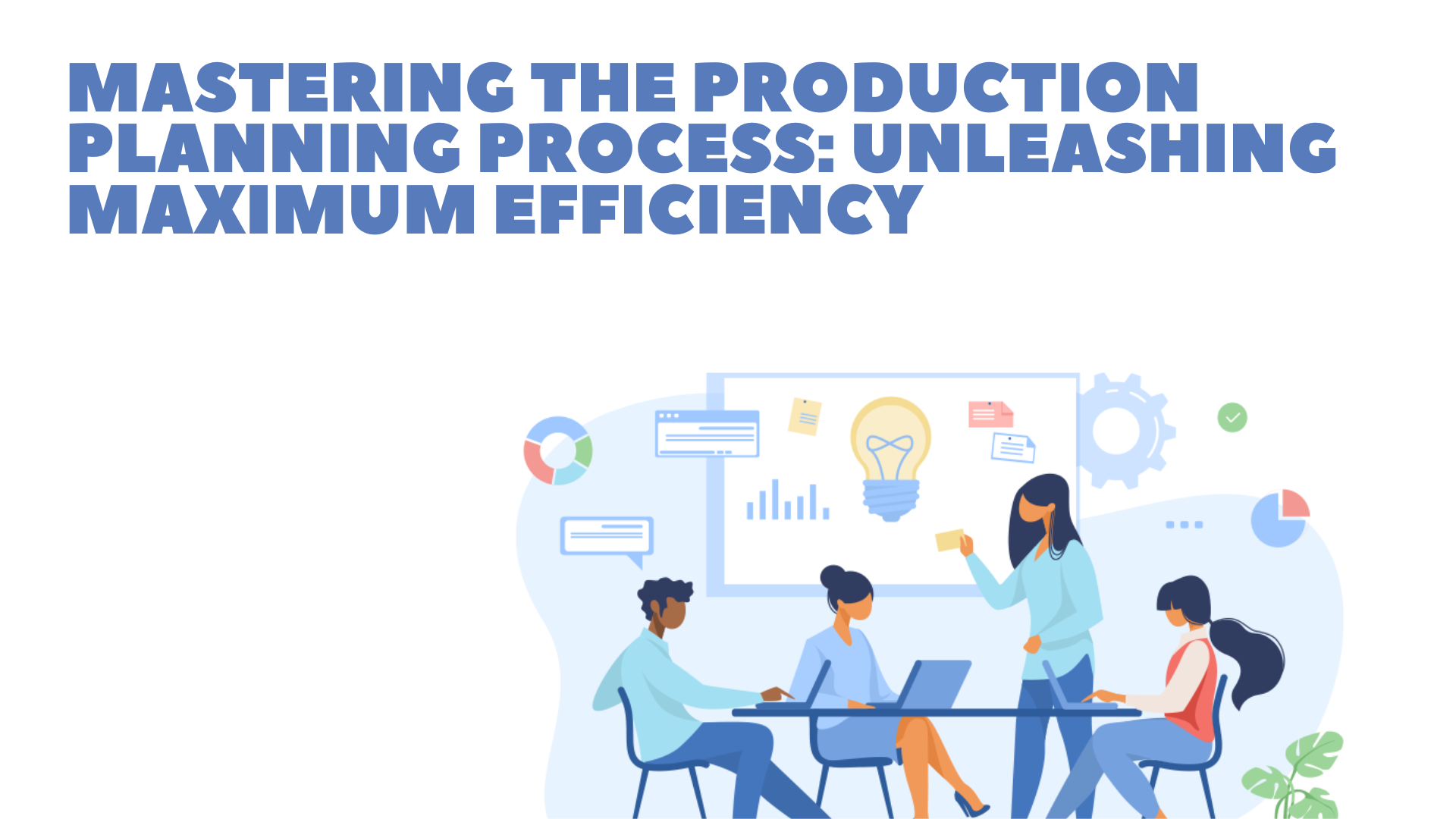In the dynamic world of manufacturing, achieving maximum efficiency is crucial for staying competitive and profitable. A well-executed production planning process is the cornerstone of this efficiency. It ensures that resources are optimally utilized, production schedules are met, and costs are controlled. In this blog, we’ll explore the key steps in the production planning process and how you can leverage them to unleash your operation’s full potential.
Understanding Production Planning
Production planning is the process of aligning production activities with market demand, resource availability, and business goals. It involves the strategic allocation of resources, scheduling of production runs, and coordination of all activities involved in manufacturing. Effective production planning minimizes downtime, reduces waste, and ensures that customer demands are met on time.
Key Steps in the Production Planning Process
- Demand Forecasting Accurate demand forecasting is the foundation of effective production planning. By analyzing historical sales data, market trends, and customer orders, businesses can predict future demand with greater precision. This ensures that production schedules align with market needs, preventing overproduction or stockouts.
- Capacity Planning Once demand is forecasted, the next step is to assess the production capacity. This involves evaluating the availability of machinery, labor, and materials. Understanding your capacity constraints helps in planning realistic production schedules and avoiding bottlenecks that can disrupt the manufacturing process.
- Resource Allocation Effective resource allocation ensures that all necessary inputs—raw materials, machinery, and labor—are available when needed. This step involves coordinating with suppliers, scheduling maintenance for equipment, and ensuring that the workforce is adequately staffed and trained.
- Production Scheduling Production scheduling is about creating detailed timelines for the manufacturing process. This includes deciding what will be produced, when, and in what quantities. Advanced scheduling tools and software can help in creating efficient schedules that minimize downtime and maximize productivity.
- Monitoring and Control Once production is underway, continuous monitoring and control are essential to ensure that the process stays on track. This involves tracking production metrics, identifying deviations from the plan, and making necessary adjustments. Real-time data collection and analysis tools can provide valuable insights for this purpose.
- Quality Control Maintaining high-quality standards is crucial for customer satisfaction and brand reputation. Implementing rigorous quality control measures at every stage of production helps in identifying defects early and ensuring that the final product meets the required standards.
- Feedback and Improvement The production planning process should be iterative. Regularly reviewing performance data, gathering feedback from staff, and analyzing customer feedback can identify areas for improvement. This continuous improvement cycle helps in refining the production process and enhancing overall efficiency.
Benefits of Effective Production Planning
- Increased Efficiency By optimizing resource use and minimizing downtime, effective production planning significantly boosts operational efficiency. This results in higher output with the same or fewer resources.
- Cost Reduction Efficient production planning helps in reducing costs by minimizing waste, avoiding overproduction, and optimizing labor and machinery use. It also enables better inventory management, reducing holding costs.
- Improved Customer Satisfaction Meeting customer demands promptly and consistently is crucial for retaining customers and building brand loyalty. Effective production planning ensures that products are delivered on time and to the desired quality standards.
- Enhanced Flexibility A well-structured production planning process allows businesses to respond swiftly to changes in market demand or production disruptions. This flexibility is vital in today’s fast-changing business environment.
- Better Decision Making With accurate data and insights from the production planning process, business leaders can make informed decisions about resource allocation, process improvements, and strategic initiatives.
Implementing Production Planning in Your Business
To implement an effective production planning process, consider the following steps:
- Invest in Technology Modern production planning software can automate many aspects of the planning process, providing real-time data and analytics that enhance decision-making.
- Train Your Team Ensure that your staff is well-trained in the tools and processes involved in production planning. Regular training and development programs can keep your team updated on best practices.
- Standardize Processes Develop standardized procedures for each step of the production planning process. This consistency ensures that everyone follows the same guidelines, reducing errors and improving efficiency.
- Collaborate Across Departments Effective production planning requires collaboration between various departments, including sales, procurement, and operations. Foster a culture of communication and collaboration to ensure alignment.
- Continuously Improve Regularly review and refine your production planning processes. Use performance data and feedback to identify areas for improvement and implement changes to enhance efficiency.
Conclusion
Mastering the production planning process is essential for unleashing your business’s maximum efficiency. By accurately forecasting demand, planning capacity, allocating resources effectively, and continuously monitoring and improving the process, you can optimize your operations, reduce costs, and improve customer satisfaction. Invest in the right tools, train your team, and foster a culture of continuous improvement to stay ahead in the competitive manufacturing landscape.









